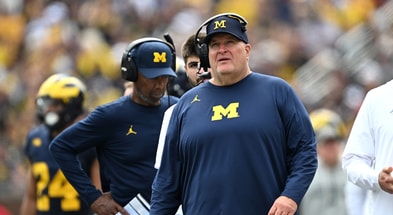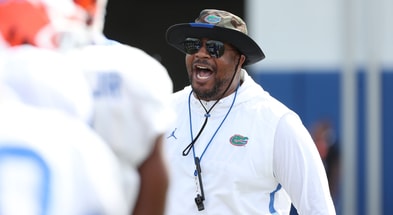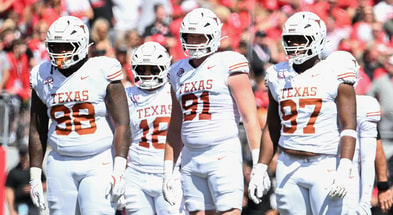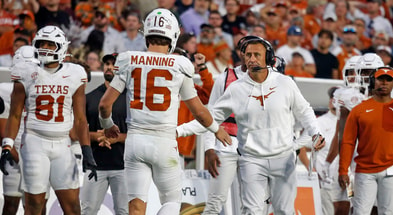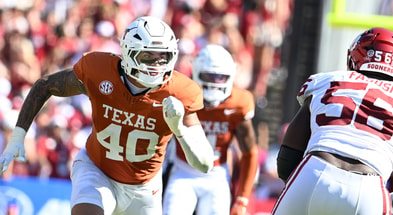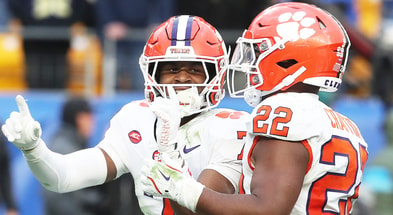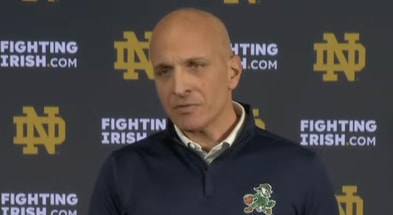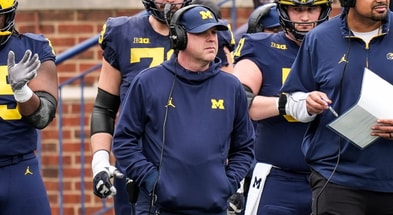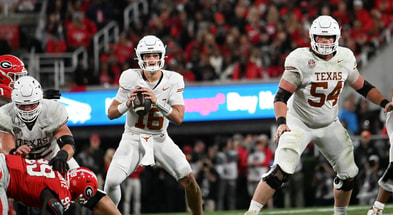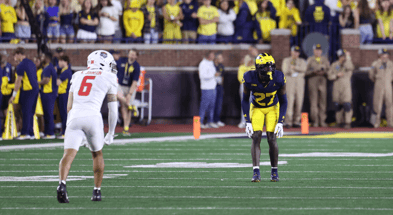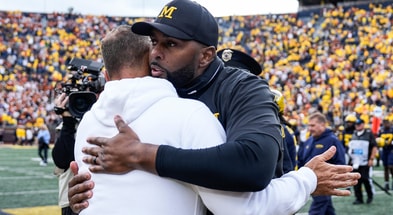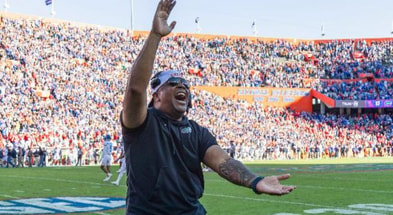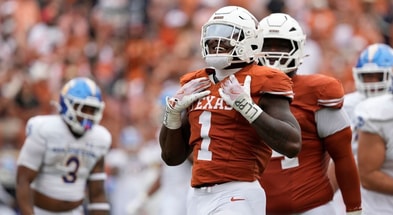How Steve Sarkisian's 'muzzle' on Michael Taaffe is strengthening the Texas Longhorns secondary
If you could only guarantee two things about this Texas football team heading into the 2026 season, it would be that Arch Manning would be QB1 and Michael Taaffe would be the team’s No. 1 leader—offense or defense.
[Sign up for Inside Texas for $1 and get PLUS access up to the Ohio State game!]
Taaffe’s story has been well-documented to this point: a state champion in high school who turned into a walk-on at Texas. A player who had to wait to become a starter and maximized his ability thanks to effort and communication.
Now in his fifth year at Texas, Taaffe aims to build on a 2024 campaign that saw the Longhorns make a College Football Playoff Semifinal and produce one of the, if not the, best secondaries in the nation.
But a lot of what made that group special is gone. Thorpe Award winner Jahdae Barron was drafted in the first round of the NFL Draft, and Andrew Mukuba didn’t have to wait long to hear his name uttered on Day Two.
This means that Texas not only lost star power in the defensive backfield, but also leadership, specifically from Barron. The Longhorns have recruited well at safety and corner, which means Taaffe has the privilege of playing alongside senior Jaylon Guilbeau and juniors Jelani McDonald, Derek Williams, and Malik Muhammad, all three of whom were top-75 players in the class of 2023. But with the transitional nature of this room, head coach Steve Sarkisian is approaching practice differently compared to years past to get the best out of this group.
“Coach (Duane) Akina and Coach (Mark) Orphey have done a tremendous job of forcing that communication in practice,” Sarkisian said. “There are days where we have to put a muzzle on Michael Taaffe. He does not get to communicate.”
Sark emphasized that this “muzzle” forces all four of those upperclassmen to communicate at the highest level, thus creating a trickle-down effect to younger players like Jordon Johnson-Rubell, Xavier Filsaime, and Graceson Littleton.
“Coach putting a muzzle on me—he doesn’t want to leash other guys,” Taaffe said. “If I’m talking all the time, then maybe some other guys don’t get an opportunity. And I know that too, and I try to be quiet as well so other guys can have their shot.”
Top 10
- 1Breaking
Scott Frost sues Nebraska
Coach takes Huskers to court
- 2Hot
Georgia players arrested
Two players face legal issues
- 3
Kyle Wittingham
Utah coach stepping down
- 4Trending
CFB Awards
Top honors for 2025
- 5Trending
Sherrone Moore charges
Ex-coach sees judge
Get the Daily On3 Newsletter in your inbox every morning
By clicking "Subscribe to Newsletter", I agree to On3's Privacy Notice, Terms, and use of my personal information described therein.
Taaffe explained that the ability to communicate has been something he’s had a grasp on since his freshman season.
“I vividly remember in practice freshman year—I was on scout team, I was wearing a black jersey—and we finished halftime, and I’m like, ‘All right, let’s go. Let’s get up,'” Taaffe said. “Ever since I was a freshman, that’s just how I’ve been taught—bring the juice, get up. This is supposed to be really, really fun. It’s supposed to be competitive. That’s what practice is all about. You’re supposed to love practice. And so I try to, you know, bring that juice every single day.”
Veteran RB Roschon Johnson was one of the first players to push Taaffe to be vocal, explaining that the way Taaffe worked had earned him the ability to speak up. Johnson, as Taaffe put it, was one of the best leaders Texas has had under Sarkisian, so an endorsement from him was bound to ring true to Taaffe’s sophomore self.
It’s rare to hear about a college football player who is too vocal with his position group, especially to the point where a coach restrains his ability to communicate in an effort to get more players involved. This, of course, is far from a negative for this Texas team. As soon as the Ohio State offense takes the field on August 30, Taaffe will be the loudest player on either side of the line of scrimmage. What Sarkisian, Akina, and Orphey’s job is in July is to make sure that Taaffe is receiving the same treatment from his fellow defensive backs.
A defensive backfield is only as good as its communication, and in a contract year for the likes of Muhammad and Guilbeau, elevated synergy is what can take Texas to the next level in 2025.


